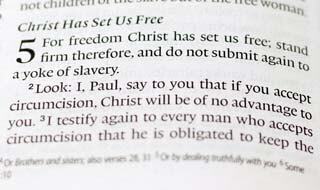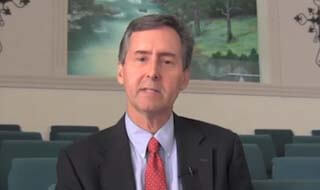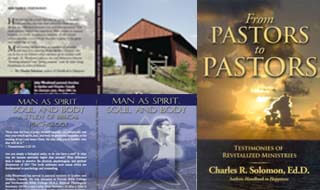The Believer as God’s Tabernacle
[“Do you not know that your body is the temple of the Holy Spirit who is in you, whom you have from God, and you are not your own?” (1 Cor. 6:19, NKJV). In his commentary on the Gospel of Luke, Luther gave a detailed explanation of the parts of man when he discussed Mary’s Magnificat: “My soul magnifies the Lord, and my spirit has rejoiced in God my Savior” (Luke 1:46).] [1]
Let us take up the words in their order. The first is “my soul.” Scripture divides man into three parts, as St. Paul says in 1 Thessalonians 5:23. . . [“Now may the God of peace Himself sanctify you completely; and may your whole spirit, soul, and body be preserved blameless at the coming of our Lord Jesus Christ.” NKJV]. The nature of man consists of the three parts–spirit, soul, and body … The first part, the spirit, is the highest, deepest, and noblest part of man. By it he is enabled to lay hold on things incomprehensible, invisible, and eternal. It is, in brief, the dwelling place of faith and the Word of God … [2]
[After noting the distinction of the body, Luther gives a profound analogy relating to the Tabernacle. What seems at first glance to be an unusual comparison becomes increasingly meaningful.]
Let us take an illustration from the Scriptures. In the tabernacle fashioned by Moses there were three separate compartments. The first was called the Holy of Holies: here was God’s dwelling place, and in it there was no light. The second was called the Holy Place; here stood a candlestick with seven arms and seven lamps. The third was called the outer court; this lay under the open sky and in the full light of the sun.
In this tabernacle we have a figure of the Christian man. His spirit is the Holy of Holies, where God dwells in the darkness of faith, where no light is; for he believes that which he neither sees nor feels nor comprehends. His soul is the Holy Place, with its seven lamps, that is, all manner of reason, discrimination, knowledge, and understanding of visible and bodily things. His body is the forecourt, open to all, so that men may see his works and manner of life.[3]
[Luther continued by drawing attention to the priority of man’s spirit in sanctification. Expounding again on 1 Thessalonians 5:23, he takes note of the sequence Paul mentioned.]
When the spirit that possesses the whole inheritance is preserved, both soul and body are able to remain without error and evil works. On the other hand, when the spirit is without faith, the soul together with the whole life cannot but fall into wickedness and error … As a consequence of this error and false opinion of the soul, all the works of the body also become evil and damnable, even though a man killed himself with fasting and performed the works of all the saints … it is necessary that God preserve, first our spirit, then our soul and body, not only from overt sins but more from false and apparent good works.[4]
[Thus, Luther clearly connected trichotomy of man with the biblical strategy for progressive sanctification. May each of us as believers rejoice that our spirit is united with Christ. The “old man” has been crucified; the “new man” refers to our regenerated spirit that has become a partaker of the divine nature. May we reckon this to be true (because it is) and yield our members daily as instruments of righteousness. “He who calls you is faithful, who also will do it” (1 Thess. 5:24, NKJV). Cf. 1 Cor. 6:17; Gal. 2:20; 2 Pet. 1:4; Col. 3:9,10; Rom. 6:6-13.]
~~~~~~~~
This article is an edited excerpt from Man as Spirit, Soul and Body: Implications for Biblical Counseling, chapter 5. It is online at http://www.GraceNotebook.com under “Theological Papers” and “Other Goodies/ E-Books”
[1] This article shows the Reformer’s distinction of the spirit from the soul ontologically [in their being, not just their connotation]. Luther’s reference to 1 Thess. 5:23 gives further support to his basic definition of trichotomy.
Most of the scholars of the Reformation held to the dichotomous (body and soul) view of man. Theologian, L. Berkhof, noted the trend of dichotomy from the days of Augustine (in the fourth century) through the Protestant Reformation (in the 16th century). “During the Middle Ages it [dichotomy] became a matter of common belief. The Reformation brought no change in this respect, though a few lesser lights defended the trichotomistic theory.” [Systematic Theology, 192.] Without tracing out these “lesser lights,” an examination of Martin Luther’s view seems to illustrate the reluctance of contemporary theologians to acknowledge trichotomy as an orthodox view in church history.
One might wonder why Luther’s trichotomous teaching has been virtually ignored. One reason may be that his references to the soul as the immaterial part (in contrast to the body) have been taken as evidence of dichotomy in his writings. His definition of soul in the same context exemplifies this: “The second part, the soul, is this same spirit, so far as its nature is concerned, but viewed as performing a different function, namely, giving life to the body and working through the body. – Luther’s Works 21:203.
When Luther said that the soul is the same “nature” (German-“natur”) he was affirming what trichotomists concede as well, i.e., that the soul and spirit are united as the immaterial side of human nature. In the same paragraph in his commentary that he defined soul he continued to further elucidate the distinction between soul and spirit: “It is its [the soul’s] nature to comprehend not incomprehensible things but such things the reason can know and understand. Indeed, reason is the light of this dwelling; and unless the spirit, which is lighted with the brighter light of faith, controls this light of reason it cannot but be in error. For it is too feeble to deal with things divine. To these two parts of man [the soul and spirit] the Scriptures ascribe many things, such as wisdom and knowledge–wisdom to the spirit, knowledge to the soul…” – Luther’s Works 21:203.
This shows that Luther believed the distinction between soul and spirit to be more than merely a functional one. The term “part” is used eight times in this context in denoting the parts of man (spirit, soul, and body). The German term Luther used was “teil,” meaning “part,” “division,” or “portion.” [Muret-Sanders Encyclopedic English-German and German-English Dictionary, 1910 ed., s.v. “Tiel,” 2:952.] He also used the synonym “stuck,” meaning “piece,” “part,” or “portion.” [Ibid., s.v. “Stuck,” 937].
However uncomfortable to the ears of the proponents of monism or monistic dualism, Luther did not hesitate to speak in terms of the three parts of a person.
[2] Martin Luther, Luther’s Works, ed., Jaroslar Pelikan (St. Louis: Concordia, 1956), 21:303.
[3] Luther’s Works, 21:304.
[4] Ibid., 21:305-06.

















